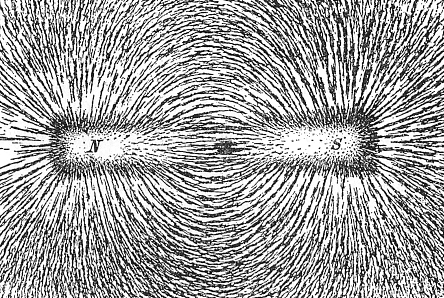Appendix II. Physics
It is helpful to review some key concepts from high school physics to prepare for this course. These are concepts that are generally covered in schools in Saskatchewan in Grade 10 science class (or earlier). This appendix contains outcomes, vocabulary, and review questions in physics.
Note that this appendix is not intended to re-teach you high school physics; it provides guidance on aspects of high school physics that will be useful as background for this introductory physical geology course. If you are struggling with these concepts please approach your instructor to chat about other resources to help you.

AII-1. Outcomes
After reviewing this appendix the learner should be:
- familiar with key physics vocabulary, and be able to use these words in sentences and provide examples of their importance in their everyday life.
AII-2. Vocabulary
Review this list of vocabulary. Try to define each on out loud, and create a sentence using each word in context. You can them up on Wikipedia if you need help remembering their meaning.
- matter
- atom
- proton
- neutron
- electron
- nucleus
- orbit
- solid
- liquid
- gas
- fluid
- steam
- positive charge
- negative charge
- neutral
- radioactive decay
- energy
- power
- electricity
- static electricity
- conductor / conductive
- insulator
- force
- mass
- velocity
- stationary
- acceleration
- rate
- pressure
- magnetic field
- repel
- attract
- physical properties
- temperature
- reflect
- refract
- prism
- concave
- convex
- units
- acoustic
- emit
- detect
- sound
- high-energy
- echo
- crystallize
- compression
- wave
- instrument
- evidence
- soft
- hard
- friction
- smooth
- rough
- clear
- opaque
- transparent
- translucent
- naked eye
- magnify / magnification
AII-3. Review Questions
- Test yourself: draw an atom. label the parts of the atom, the types of particles (protons, neutrons, and electrons), and the charges of the different particles.
- What is acceleration? how does it differ from force? How does it differ from velocity?
- Imagine yourself starting a car and increasing the speed from 0 km/hr to 100 km/hr, then driving down the highway with the cruise control set to 100 km/hr for 5 min. Then you slow the vehicle down from 100 km/hr to 30 km/hr to turn onto a country road. As soon as you turn onto the country road, you park the car so you can get out and admire the beautiful Saskatchewan sunset!
- During which part(s) of the drive is the car accelerating?
- During which part of the drive does the car have a constant velocity, or speed?
- what is the difference between acceleration and constant velocity?
- If you are holding an apple then drop it, what force is acting on the apple that causes it to drop and hit the ground?
- Is the force of gravity (gravitational acceleration) on Earth higher or lower than the force of gravity (gravitational acceleration) on the moon? Why?
- What is the difference between mass and weight?
- What is the equation that is used to calculate the weight of the apple (hint: Newton’s second law of motion)?
- If you were on the moon, how would the weight of the apple be different from the weight of the apple on Earth?
- What is an example of a magnetic field you encounter in everyday life?
- What happens when you put an object made of iron in a magnetic field? Why?
- What are some examples of metric units? Imperial units?
- What units are used to describe:
- the velocity of a car driving down the highway?
- the mass of an object?
- the speed of light?
- The area of a room (in metric units)?

